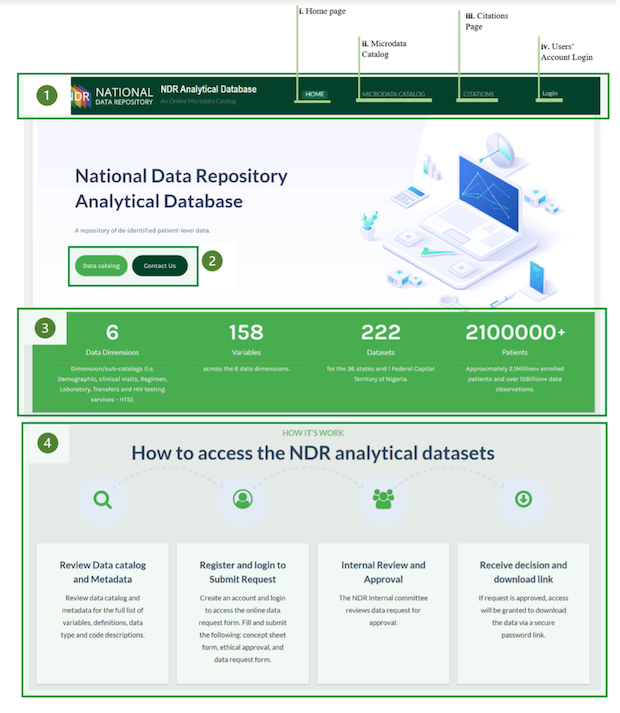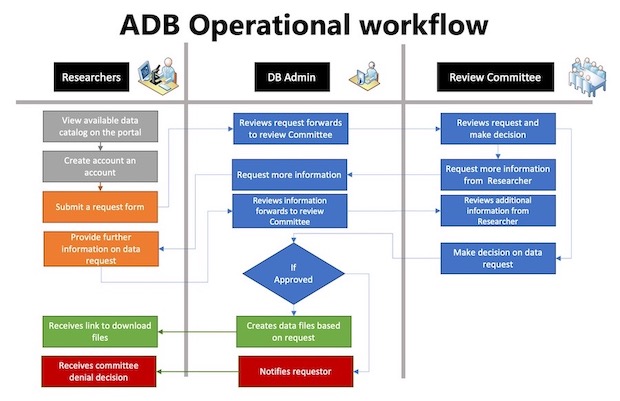Analytical Database Development Allows for Analysis of Nigerian NDR Data

The analytical database online catalog and data request management portal.
Over the last year, the 201 Team, Ciheb’s health informatics group, developed a database that allows policy makers, researchers, and data scientists to analyze anonymized patient-level HIV data from the Nigerian National Data Repository (NDR).
The NDR is a centralized databased for the collection, management, and aggregation of HIV patient-level data from health facilities across the country. The NDR is a powerful patient-centric tool, but due to voluminous data and constant real-time upload processing, evaluation and research question driven analyses require a specific data access pipeline.
To enable access to this valuable data for uses beyond program monitoring, the 201 Team designed a separate analytical database of the NDR that optimizes storage space by eliminating redundant data, while maintaining accuracy and integrity. A multi-disciplinary team of public health researchers, epidemiologists, physicians, statisticians, and health informatics software engineers worked on various stages of the database development.
The database was built with the objectives of providing a platform for research driven data requests that enabled faster query performance, better maintenance, and scalability. The 201 Team achieved this by extracting data from the NDR to a simplified database schema via a process of denormalization and data validation. Denormalization refers to a technique to increase database performance by adding or grouping together redundant data, and data validation refers to a process of ensuring quality in the data.
The resulting analytical database provides a more efficient way of accessing quality and consistent de-identified patient-level data for program evaluation and research.

Operational workflow for the analytical database
Designed for Patient-Centric View
The design and structure of the new analytical database reflect a patient-centric view of the HIV care continuum, characterizing an HIV patient’s pathway through the care system. The 201 Team designed the database to capture a single patient’s data across the continuum or cascade, from when the patient was diagnosed, enrolled into care, retained and ongoing care, and their achievement or maintenance of viral suppression.
Using the framework of the HIV cascade to design the simplified database schema offered the 201 Team a better way to structure the data and characterize the dynamic interactions of a patient with the care system that will translate more easily to analytically focused users of the data. This not only simplifies the data schema to fewer tables or entities but aggregates the variables into meaningful sequential stages of care for valuable cross-sectional snapshots.
Access to this data is granted following a review and approval of the request by a Federal Ministry of Health (FMoH) led review committee. Data will be disseminated under a licensed data file sharing policy as stipulated by the NDR Data Use Agreement of the FMoH.
The analytical database is already in use for evaluations of the impact of low-level viremia on loss of viral control and the outcomes of dolutegravir roll out. The ultimate goal is to ensure the NDR contributes to evidenced-based programming.



